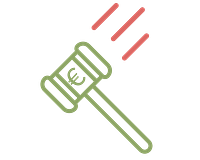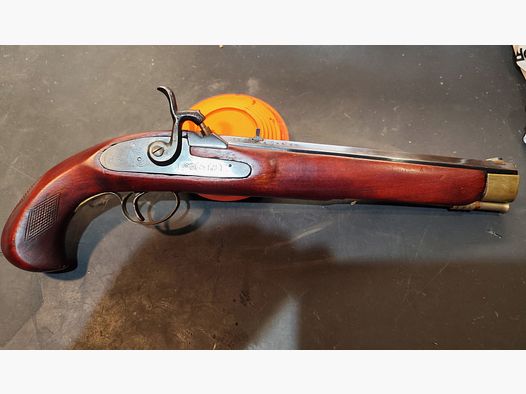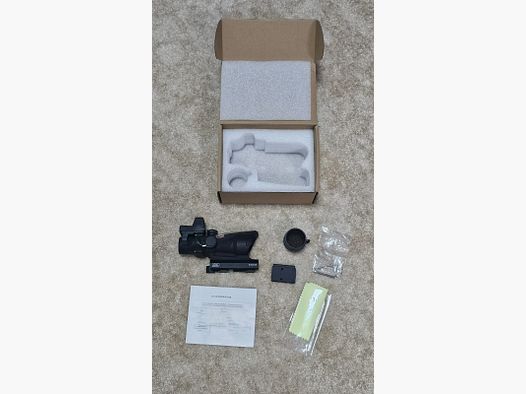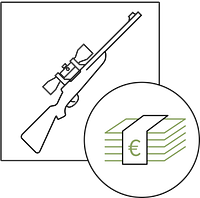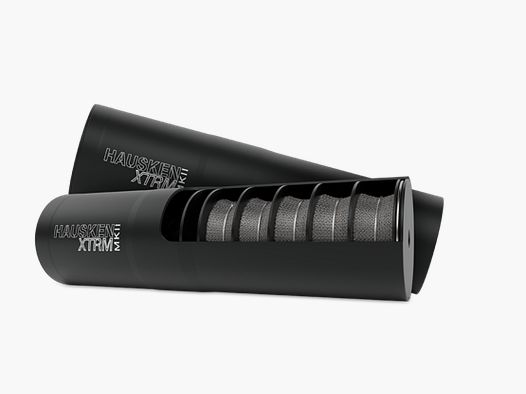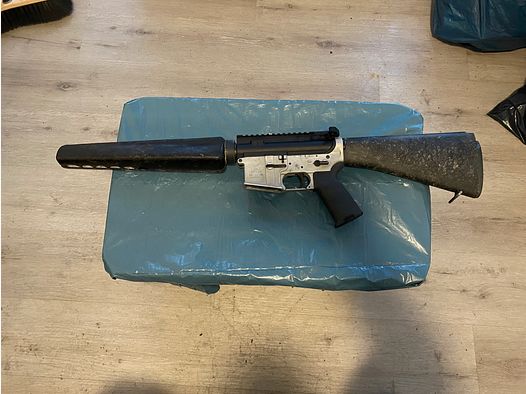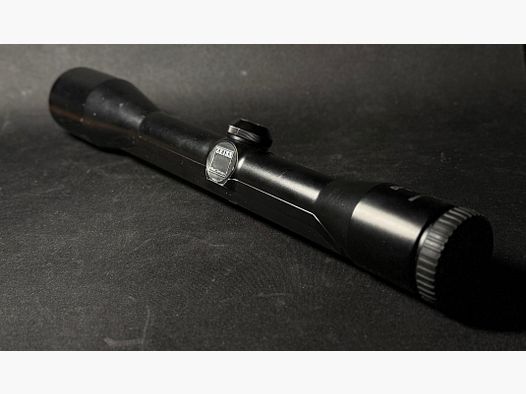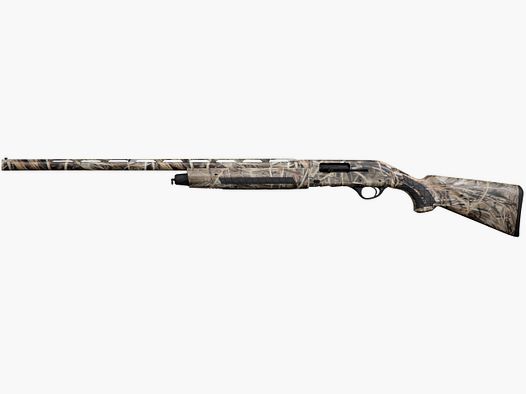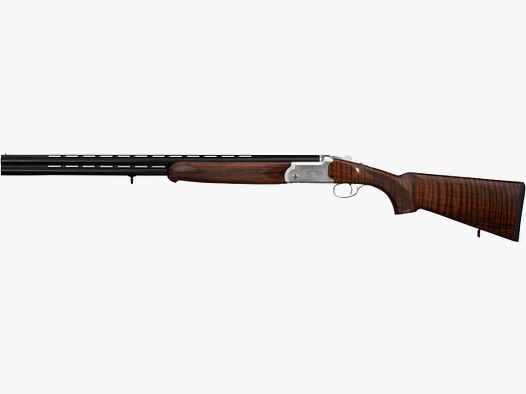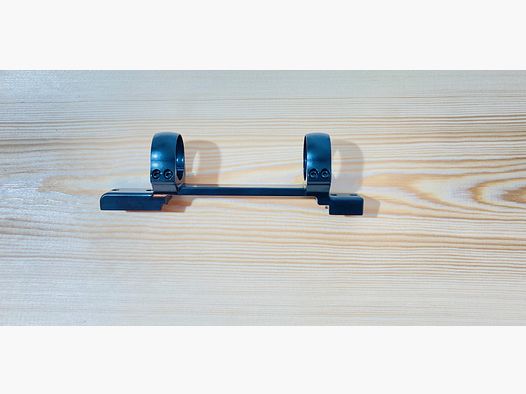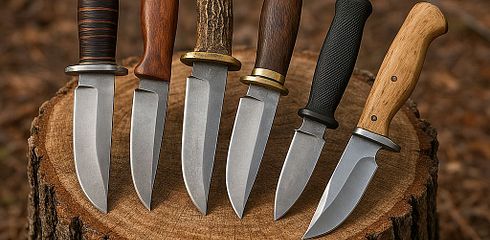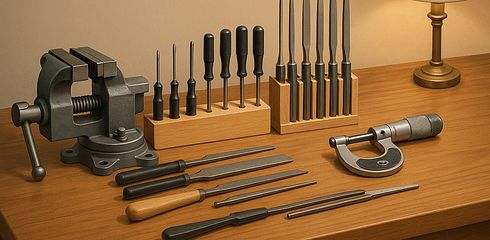A sharp hunting knife starts with the right sharpening angle. Here are the key points you need to know:
-
Sharpening angles affect sharpness and durability:
- 18–22°: Very sharp, ideal for fine tasks like skinning or filleting.
- 22–25°: More robust, perfect for multipurpose knives and tougher tasks.
- 25–30°: Stable for hard use like cutting through bones.
-
Tools for precise sharpening:
- Sharpening stones: 1,000 grit for basic sharpening, 3,000 grit for fine honing.
- Angle guides: Magnetic guides or wedges for a consistent sharpening angle.
- Leather strops: For polishing and removing burrs.
-
Avoiding mistakes:
- Avoid overheating the blade – regular cooling helps.
- A consistent angle is crucial – use the marker method.
-
Storage and maintenance:
- Store knives in sheaths, blocks, or with blade guards.
- Regularly strop with leather to maintain sharpness.
| Sharpening Angle | Application Area | Characteristics |
|---|---|---|
| 18–22° | Fine tasks | Very sharp, less robust |
| 22–25° | Multipurpose knives | Good balance, durable |
| 25–30° | Hard use | Stable, less sharp |
With these tips, your hunting knife will stay sharp and ready for use. A sharp knife is not only more effective but also safer.
Knife Sharpening - Cutting Angle, What is the Right One for My Knife?
Tools and Materials for Sharpening
The right tools are essential for achieving precise results when sharpening. Without the proper equipment, the sharpening angle often remains inaccurate, which can affect the quality of the sharpening. A central component is the sharpening stones.
Types of Sharpening Stones and Their Application
Sharpening stones are the heart of any sharpening setup. Their selection depends on the condition of the blade and the desired result. The grit – also referred to as Grit – indicates how fine the stone works. The higher the grit, the finer the result.
For most hunting knives, a combination of a 1,000 grit and a 3,000 grit stone is sufficient. The 1,000 grit stone is ideal for basic sharpening, while the 3,000 grit stone provides the fine honing. If the blade is severely damaged or extremely dull, a coarse stone with a grit of 220 is recommended. For the final fine honing, stones with a grit between 6,000 and 8,000 can be used.
There are various materials to choose from: Natural stones like Arkansas stones made from Novaculite are very durable but also more expensive. Synthetic stones offer good value for money and are sufficient for most applications. Diamond stones work particularly aggressively and remove material quickly, while ceramic stones produce a uniform and smooth edge.
Maintaining the stones is also important: Water stones need to be soaked before use, oil stones require a thin layer of oil, while diamond and ceramic stones can be used dry. Finally, it is advisable to use a leather strop to remove the burr and polish the edge.
Tools for a Constant Sharpening Angle
In addition to sharpening stones, angle guides are indispensable for maintaining the sharpening angle accurately. Especially for beginners, such aids are important, as the angle often varies unconsciously without support, leading to an uneven edge.
A proven tool is the DMT EdgeSharp Magnetic Angle Guide, which impresses with its magnetic attachment. For larger knives, the DMT Knife Sharpening Guide is suitable. The Wedgek AGM Angle Wedges have also proven effective and receive a rating of 4.3 out of 5 stars on Amazon with over 2,000 reviews.
A simple alternative is to use a marker to visually check the sharpening angle.
Additional accessories like a sharpening stone holder prevent the stone from slipping during sharpening. For even more precise handling, there are holders with angle markings. If you want to sharpen on the go, you can rely on compact solutions like the XADR Slim Knife Sharpener.
| Tool | Price | Features |
|---|---|---|
| DMT EdgeSharp Magnetic Guide | 4.99 € | Magnetic attachment, compact |
| Wedgek AGM Angle Wedges | 12.99 € | 4.3/5 stars, over 2,000 reviews |
| Norton Angle Guide Wedge | 8.99 € | Classic wedge shape |
| Messermeister Angle Guide Set | 9.95 € | 4.6/5 stars, 2-piece set |
For practice, initially cheaper knives are suitable. With the right equipment and a bit of patience, you can quickly achieve precise and even results.
How to Sharpen Your Hunting Knife Step by Step
With the right preparation and technique, your hunting knife will be razor-sharp.
Preparing the Sharpening Stone
Start by placing the sharpening stone on a damp towel and positioning it on a stable, flat surface. This prevents the stone from slipping during sharpening. Water stones should be soaked in water for about 45 minutes, while other sharpening stones only need to be moistened. Oil stones, on the other hand, require a thin layer of honing oil. Position the stone so that the short side is parallel to the edge of the table – this makes it easier for you to guide your movements.
To extend the life of your sharpening stone, you should maintain it regularly. Smooth the surface with 100 grit sandpaper, and for deeper scratches, you can also use 400 grit sandpaper. A repair tool for sharpening stones helps you eliminate unevenness so that the stone works optimally. [22–24]
The Marker Method for the Right Sharpening Angle
The marker method, also known as the "Sharpie trick," is a simple yet effective technique for controlling the sharpening angle. Color the entire bevel of your blade with a marker – whiteboard markers are particularly suitable as they are easy to remove. Then perform a few sharpening strokes over the stone.
If the marker is evenly removed across the entire bevel, you have the right angle. If the color disappears only at the edge, the angle is too steep. Conversely, if it remains on the outer edge, the angle is too flat. Remove the marker residue before continuing with sharpening. This method helps you work precisely and maintain the correct angle. [25–28]
Sharpening Motion and Pressure – Here's How
After checking the sharpening angle, focus on maintaining even movements and the right pressure. Keep the angle constant and move the blade in smooth strokes over the stone. It is important to perform the same number of sharpening strokes on both sides of the blade. Often, it is sufficient to cut into the stone, as this makes material removal more efficient.
As Al Buck, the founder of Buck Knives, once said:
"Always cut into the stone, never drag your knife edge back over the stone and always maintain your angle."
An angle between 22 and 25 degrees is ideal. Move the blade with light pressure from the heel to the tip over the stone and repeat this five to ten times per side. Especially at the rounded tip of the blade, you should slightly raise your elbow to maintain the angle.
Regularly switch sides to ensure even material removal. Small aids like tape can help you maintain a constant angle. However, the most important thing is to develop a consistent technique. It is better to use a slightly varying but constant angle than to create different angles along the entire blade. [4, 29–32]
Optional: For more tips and high-quality accessories for your hunting knife, check out Gunfinder – they have everything you need for your next hunt.
Avoiding Common Sharpening Mistakes
Even experienced hunters can make mistakes while sharpening that affect the results. Most often, it is due to not maintaining a constant angle and even pressure. Patrick Roehrman from MT Knives puts it aptly:
"Sharpening is 90% skill and 10% tools."
A common mistake is using too steep a sharpening angle, which leads to thick, dull edges. Stick to the recommended 22–25° for optimal results. Constantly changing sharpening techniques is also problematic. Even if progress seems slow at first, remain consistent with one method – consistency is more important than perfection. Additionally, avoid starting with an extremely dull knife, as this unnecessarily complicates the learning process.
Start with coarse sharpening stones to efficiently remove material before moving on to finer grits. Do not apply excessive pressure, as this can damage the blade and increase the risk of injury.
Preventing Overheating of the Blade
Another common mistake is overheating the blade. If the blade gets too hot while sharpening, the steel loses hardness and becomes soft – damage that cannot be reversed. Blue discoloration on the blade is a clear warning sign of overheating.
To avoid this, work with many light strokes instead of a few heavy ones. Regularly dip the blade in water, especially when using coarse sharpening stones or electric devices. Bob Terzuola, a renowned knife maker, uses this technique as standard after heat treatment. Also, check the temperature by touching the edge with your hand. If it gets too warm, take a break and let it cool down. Lubricants like water or oil not only help with cooling but also improve the sharpening results.
Correcting Angle Issues
Once basic mistakes have been avoided, it is time to address irregularities in the sharpening angle. Even small movements in the wrist or forearm can cause the angle to vary along the edge. The result is an uneven and vulnerable edge. You can use the marker method to check if the angle remains constant. For uneven bevels, focus on matching the smaller bevel to the larger one.
Jason B., an experienced knife maker, recommends:
"If the blade is well ground and it is just the edge needing attention I would start by cutting into a coarse stone a few times to make sure the edge is straight from heel to tip. This will also make sure the edge has a smooth curving flow and doesn't have any dips or recurves. From here, grind the smaller bevel at the same angle as the large bevel. Stop often to check progress and don't forget to make a few passes every so often on the larger bevel just to keep the burr in check."
Use a coarse stone to quickly remove material and adjust the angle. Alternate working on both sides of the blade to control the burr, and regularly check your progress. Only when the desired angle is achieved should you switch to finer grits.
Practical aids like the two-cent trick, folded paper, or a matchbook can help you maintain a constant angle. A consistent guiding of the sharpening angle ensures that the bevels remain uniform along the entire length of the blade. Without this consistency, weak points can develop that wear out faster.
If the problem is not with the sharpening angle but with the original blade grind, patience is required. In such cases, you may need to remove more material to create an even geometry.
sbb-itb-1cfd233
Maintaining Sharpness in the Long Term
Without regular maintenance, even the sharpest hunting knife quickly loses its performance. To ensure your blade remains reliably sharp over time, it is important to maintain it properly between uses. This way, you can save yourself frequent sharpening.
Regular Stropping Between Uses
A leather strop or a ceramic rod is ideal for maintaining the sharpness of your blade. Stropping realigns the bent metal at the edge, restoring the original sharpness.
With a leather strop, you can care for the blade particularly gently. Always pull the edge backward over the leather – never in the cutting direction. Even an old leather belt can serve well here. Ceramic rods are a more robust alternative and are suitable for knives that have become somewhat dull.
Before you start stropping, thoroughly clean the knife. Residues like dirt or meat can affect the edge and worsen the results. After sharpening, you should also pull the blade over a leather strop to refine the sharpness.
How often you strop your knife depends on how frequently you use it. With regular use, it is usually sufficient to strop the blade once a week or every two weeks. This simple habit ensures that your knife does not become completely dull and saves you time during the next sharpening. In addition to stropping, proper storage is also an important factor.
Proper Storage
Proper storage not only protects your knife from damage but also keeps it sharp longer. Knives that are unprotected in a drawer quickly become dull and can damage other items.
Knife sheaths are the best solution if you store your knife in a drawer. For home use, knife blocks are ideal. They keep the blades separated and prevent damage. Make sure the knife block is clean and dry to avoid bacterial growth.
Another space-saving option is magnetic strips. They keep the knives within reach and protect the edge. It is important to attach and remove the blade carefully to avoid scratches. For drawers, blade guards or special inserts that protect each blade individually are recommended.
| Storage Method | Advantages | Considerations |
|---|---|---|
| Magnetic Strip | Space-saving, quick access | Secure mounting, air contact |
| Knife Block | Protected storage, practical | Requires space, needs cleaning |
| Drawer Insert | Organized storage | Requires its own drawer |
| Blade Guards | Flexible, ideal for transport | Time-consuming with multiple knives |
Before storage, you should thoroughly dry the blade to prevent rust formation. For knives made of carbon steel, a thin layer of oil on the blade and handle is recommended to prevent corrosion. Stainless steel blades are less prone to rust but also benefit from this care.
For safe transport, knife rolls or knife bags are ideal. They keep multiple blades separated and protect them from damage – perfect for hunting trips or transporting several knives.
Jordan McDowell, an experienced knife expert, gives a clear warning:
"The worst thing you can do to a knife is throw it in the dishwasher. The heat, detergent, and barrage of water can seriously damage the blade and the handle of your knife."
Therefore, always clean your hunting knives by hand with warm water and mild dish soap. Then dry them immediately and store them properly. This way, the sharpness will be maintained longer, and you will need to sharpen less frequently.
Conclusion
The sharpening angle plays a crucial role in a knife's performance. For most hunting knives, the optimal angle is between 20 and 25 degrees, as this range offers a good balance between sharpness and durability. Knife maker Aleks Nemtcev sums it up:
"The choice of sharpening angle depends heavily on how the knife is intended to be used, as each type of cut benefits from a specific edge geometry."
Harder steels can handle sharper angles, while softer steels require wider angles. If you are unsure, stick to the manufacturer's recommendations or opt for the 20-degree angle – a proven all-rounder.
Consistency is key. A uniform sharpening angle leads to significantly better results than a variable one. Angle guides or simple markings can help you with this. If you have little experience, practice first on an inexpensive knife. This way, you will be well-prepared to keep your knives in top condition for the long term.
Proper maintenance also makes a big difference. Regular stropping with a leather strop maintains sharpness and reduces the effort required for sharpening. Store your knives in a sheath or knife block to protect the blade from damage.
Remember: A sharp knife is a safe knife. With the right technique, you will quickly develop a feel for the optimal sharpening angle. Your hunting knife will then serve you faithfully for many years. You can find suitable sharpening accessories at Gunfinder.
FAQs
How do I find the right sharpening angle for my hunting knife?
The Right Sharpening Angle for Hunting Knives
The optimal sharpening angle of your hunting knife depends heavily on its type and intended use. In most cases, an angle of 20 to 25 degrees is just right. This range provides a good balance: the blade remains sharp enough for precise cuts but is also robust enough to handle tougher tasks.
To ensure you maintain the correct angle, you have several options. You can visually estimate the angle or use a protractor tool. Even easier are special sharpening aids that keep the angle consistent. If you are unsure, it is better to start with a smaller angle and gradually work your way to the perfect sharpening angle. This way, you avoid damaging the blade.
What types of sharpening stone materials are there, and which is best for my hunting knife?
Sharpening stones are made from different materials such as ceramic, diamond, or water stones, which differ mainly in their sharpening effect and application area. Coarse grits (150–600) are excellent for repairing damage to the blade or performing the initial sharpening. For basic and fine sharpening, medium to fine grits (800–3000) are ideal. If you want to achieve an extremely sharp blade, you should opt for a particularly fine stone with a grit of 3000 or higher.
A double-sided sharpening stone that combines a coarse and a fine side is particularly practical. This way, you can perform both basic and fine sharpening with just one tool. Ceramic stones are extremely durable but require regular maintenance. Diamond stones, on the other hand, are very efficient but also more expensive. The choice of material depends on how often you plan to use the stone and what requirements you have for the sharpening results.
How do I prevent my hunting knife blade from overheating and losing hardness while sharpening?
To avoid overheating and loss of hardness in your blade while sharpening, you should keep a few important points in mind:
- Sharpen slowly: A lower sharpening speed helps generate less heat and protects the blade.
- Cool regularly: Regularly dip the blade in water or use a suitable lubricant to keep the temperature consistently low.
- Use the correct sharpening angle: An angle that is too flat may require more pressure, unnecessarily heating the blade.
With these simple measures, your blade will not only stay sharp but also remain in top condition.


